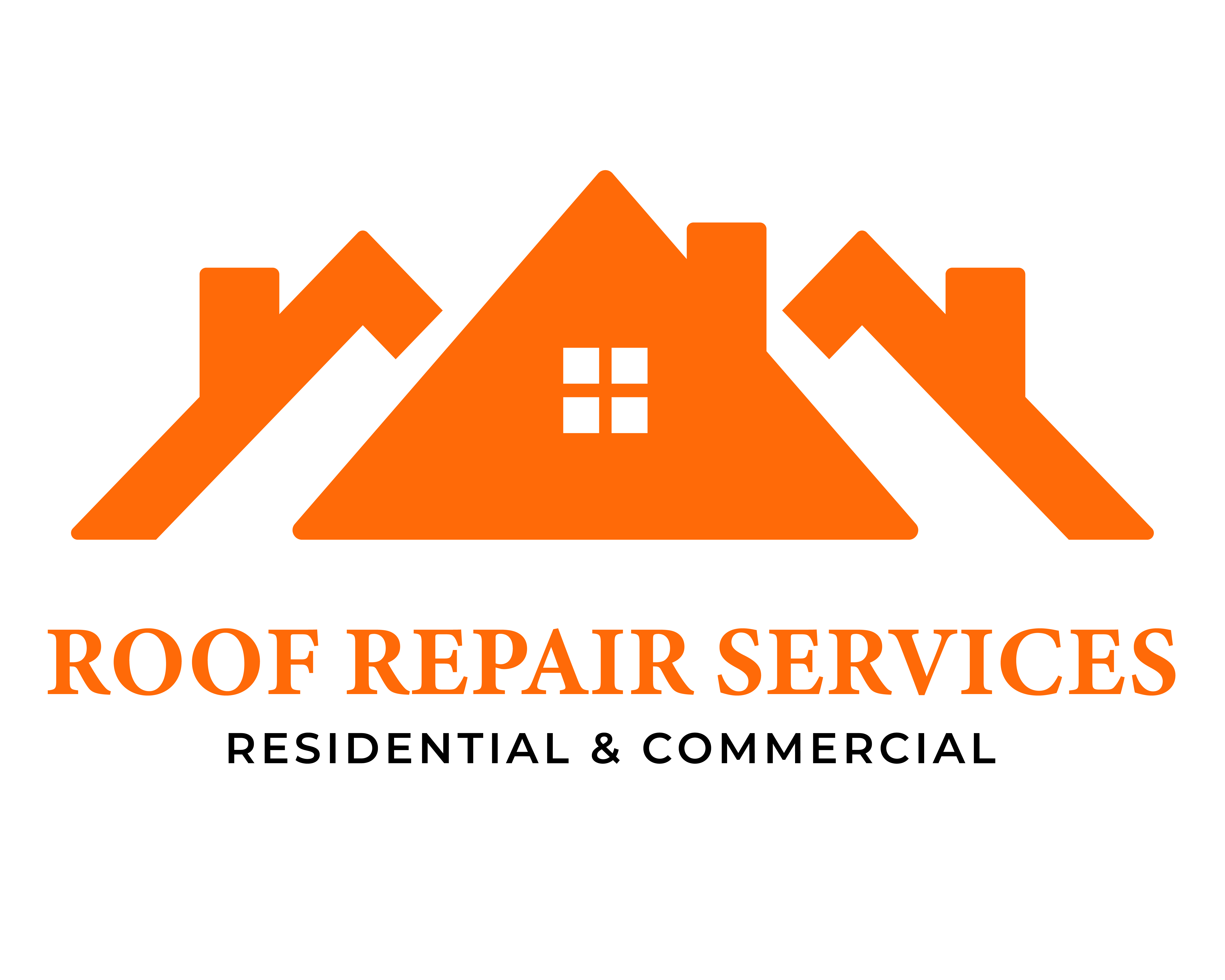Can You Repaint Colorbond Roofs? - Roof Repair Services
- Home
- Can You Repaint Colorbond Roofs?
Car Repairing
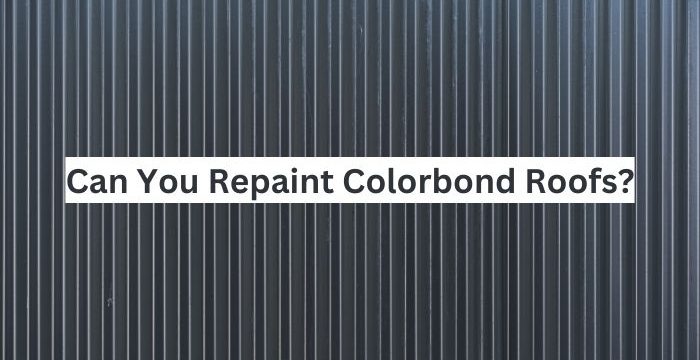
- January 7, 2024
- By: roofrepair_admin
- General
- Comments: 0
Can You Repaint Colorbond Roofs?
Colorbond roofing has become a staple in Australian architecture, renowned for its durability, aesthetic appeal, and versatility. This type of steel roofing, coated with a specialized paint, is designed to withstand the harsh Australian climate. In this section, we introduce Colorbond roofing, highlighting its key features and why it has become a popular choice for Australian homes.
The Feasibility of Repainting Colorbond Roofs
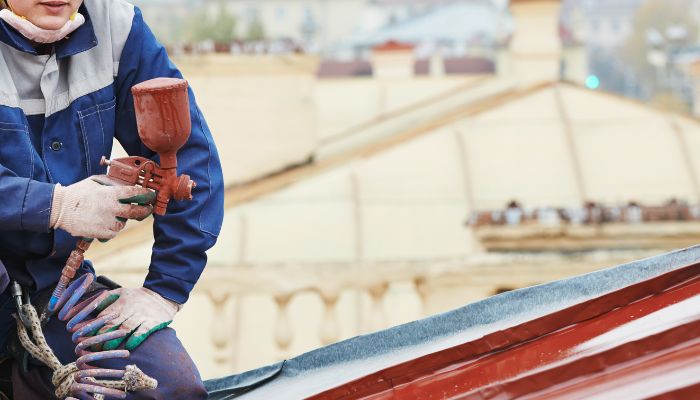
Repainting a Colorbond roof is a topic of interest for many homeowners looking to rejuvenate their property’s appearance or extend the roof’s lifespan. This part explores the practicality of repainting Colorbond roofs. We discuss the factors that need to be considered, such as the roof’s age, the condition of the existing coating, and environmental influences that might affect the repainting process.
Assessing the Condition of Your Colorbond Roof
Before commencing a repainting project, it’s essential to assess the current state of your Colorbond roof. This section provides a guide on how to conduct a thorough inspection, identifying signs of wear such as rust, fading, and peeling paint. We’ll also cover the importance of understanding the colorbond roof paint can’s history, including any previous paint jobs or repairs, to plan the repainting process effectively.
Selecting the Right Paint for Colorbond Roofs
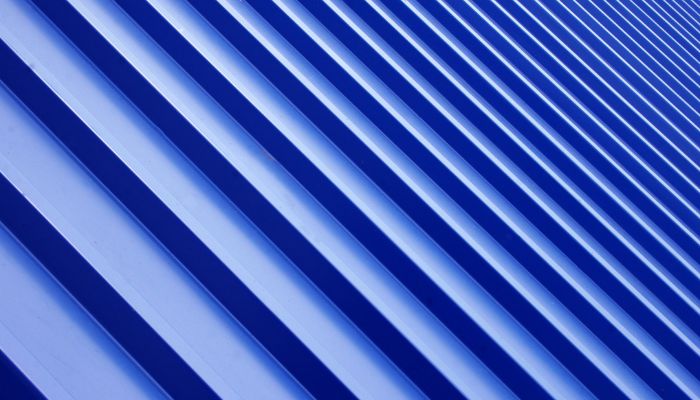
Choosing the correct paint is crucial for a successful repainting job on a Colorbond roof. This part offers detailed advice on how to select paint that is compatible with Colorbond steel, focusing on factors like UV resistance and suitability for Australian weather conditions. We’ll explore options that are specifically formulated for Colorbond steel roofs and discuss considerations for color selection to enhance your home’s aesthetic.
Applying Colorbond Paints and Other Roof Paints
The application of Colorbond paint or other suitable roof paints is a critical stage that demands attention to detail. We’ll cover the essentials of paint preparation, ensuring color consistency, and the recommended techniques for applying the paint. Special attention will be given to maintaining a wet edge to avoid streaks and ensuring each layer is dry before applying the next.
Choosing the Right Paint and Tools
Selecting the correct roof paint, and tools is crucial for a successful repaint. We’ll delve into the variety of Colorbond roof paints and other suitable options for metal roofs, discussing their properties and benefits. The use of tools like airless spray guns for an even application and the importance of choosing the right type of paint for specific roofing materials, such as Colorbond steel or corrugated roofing, will be highlighted.
Preparing the Roof Surface for Repainting
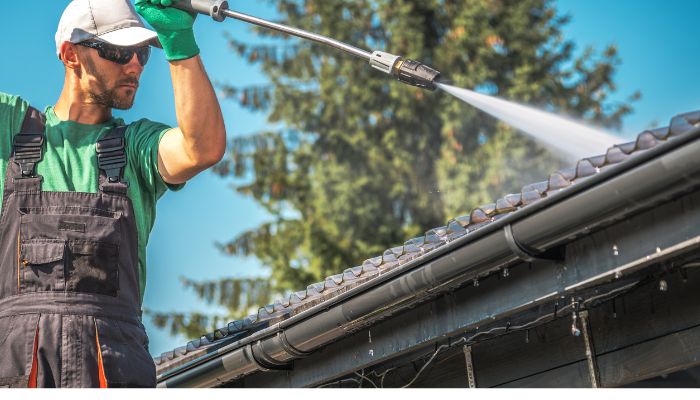
The longevity and quality of the repainting job largely depend on proper surface preparation. In this section, we delve into the steps involved in preparing a Colorbond roof for repainting. This includes cleaning the roof to remove dirt, grime, and old paint, as well as repairing any damages. Tips on effective cleaning techniques and the necessary tools and materials for this crucial stage are also provided.
Applying Primer: The First Step in Repainting
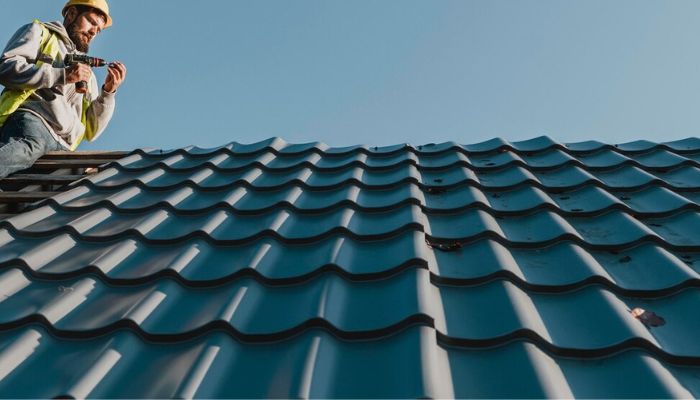
The application of primer bare metal surface is a critical step in the repainting process, particularly for Colorbond roofs. This part explains the role of primer in enhancing paint adhesion and providing additional protection against the elements. Guidance on choosing the appropriate primer for Colorbond steel and best practices for its application are included to ensure a solid foundation for the new paint.
Step-by-Step Guide to Painting a Colorbond Roof
Painting a Colorbond roof is a meticulous process that requires attention to detail to ensure a lasting and aesthetically pleasing result. This comprehensive guide will walk you through each step of the painting process, from the initial preparation to the final coat. We’ll cover the best practices for each stage, ensuring that even those new to the colorbond roof painting process can achieve a professional-looking finish.
Choosing the Right Day for Painting
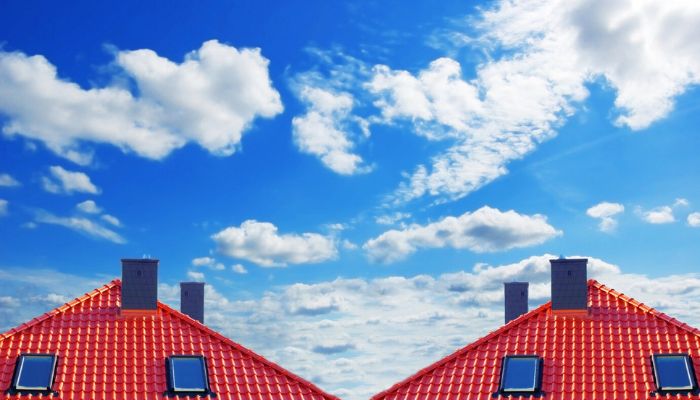
The success of painting a Colorbond roof can be influenced by weather conditions. This section discusses the importance of choosing the right day for painting, considering factors like temperature, humidity, and the likelihood of rain. We’ll provide tips on how to read weather forecasts and plan your colorbond painting project accordingly to avoid common weather-related pitfalls.
Addressing Environmental Challenges
Metal roofs, especially in harsh climates like Australia’s, face unique environmental challenges. This section will delve into how to protect your repainted roof from factors such as the harsh Australian sun, coastal salt spray, and extreme weather conditions. We’ll discuss preventive measures like rust treatment and the application of protective coatings.
Painting Techniques for Colorbond Roofs
Applying paint to a Colorbond roof requires specific techniques to ensure even coverage and avoid issues such as streaking or pooling. This part of the guide will detail the best methods for applying paint a colorbond roof, whether you’re using brushes, rollers, or a sprayer. We’ll discuss how to work systematically across the roof, the ideal thickness for each coat, and how to avoid common mistakes for a smooth, consistent finish.
Colorbond and metal roofs often feature unique design elements like ridges, valleys, and gutters. This section will provide strategies for effectively painting these areas, ensuring they receive adequate attention and coverage. We’ll also discuss the challenges these features present and offer practical tips for achieving a consistent finish across these complex surfaces.
Drying and Curing Time
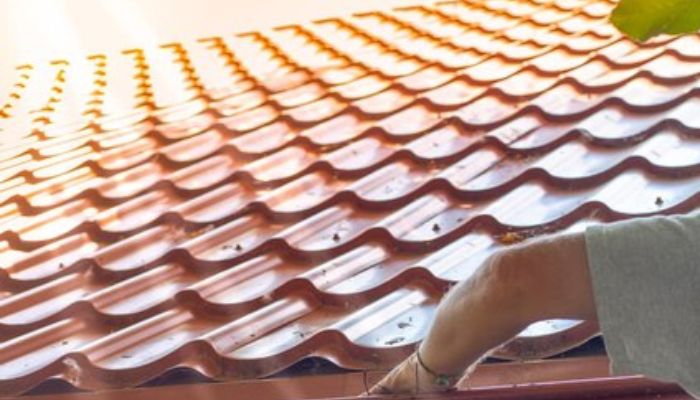
Understanding the drying and curing time of the paint is crucial for a successful Colorbond roof repainting project. This section explains the difference between drying and curing, and provides guidelines on how long to wait between coats and after the final coat. We’ll also cover factors that can affect drying times, such as weather conditions and paint type.
For roofs with more significant issues, such as broken tiles on concrete tile roofs or corroded sections on galvanized iron roofs, repair work is essential. This part will focus on how to address these problems before painting concrete tile roof, ensuring a smooth and even surface for the new coat of paint.
Optimal Weather Conditions for Roof Painting
The success of your painting project is heavily influenced by weather conditions. This section discusses the ideal weather for painting metal roofs, including Colorbond surfaces. We’ll cover how to plan your project around the weather, considering factors like temperature, humidity, and the likelihood of rain.
Addressing Edges, Joints, and Fixtures
Colorbond roofs often have unique features like edges, joints, and fixtures that require special attention during painting. This part will focus on techniques for painting these areas to ensure complete coverage and a neat finish. We’ll also discuss how to handle challenging spots and provide tips for achieving a professional look around fixtures and fittings.
Painting Techniques for Different Roof Types
Different metal roofs, from corrugated roofing to flat metal and steel roofs and surfaces, require specific painting techniques. This part of the guide will detail the best methods for applying paint to various types of metal roofs, including Colorbond. We’ll discuss how to work systematically, the ideal thickness for each coat, and how to avoid common mistakes for a smooth, consistent finish.
Maintaining Consistency in Color and Finish
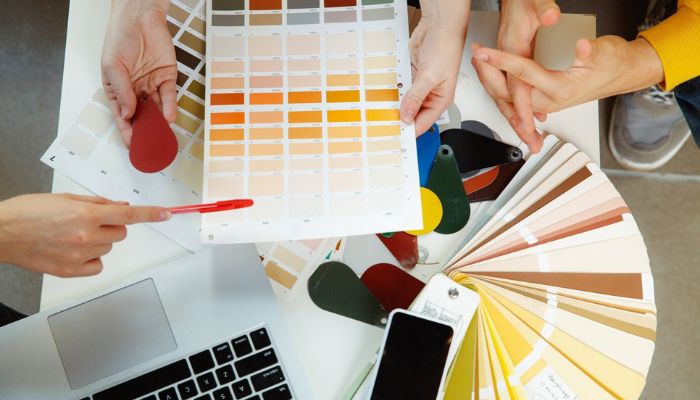
Maintaining consistency in color and finish across the entire roof is essential for an aesthetically pleasing result. This section offers advice on how to mix and apply paint to ensure uniformity how to paint metal roof. We’ll cover techniques like ‘boxing’ paint (mixing all paint together before starting) and tips on how to maintain a consistent application rate and thickness.
Maintaining a repainted Colorbond or metal roof is key to preserving its appearance and protective qualities. This part will offer strategies for long-term maintenance, including routine inspections, cleaning methods to remove debris and prevent corrosion, and tips for addressing any signs of wear or damage promptly.
Drying, Curing, and Quality Control
Understanding the drying and curing times is vital for a durable and long-lasting paint job. This part explains the difference between the two processes and offers guidelines on the optimal waiting period between coats and after the final application. We’ll also explore how to conduct a quality control check, ensuring the paint has been applied evenly and without defects.
Final Inspection and Touch-ups
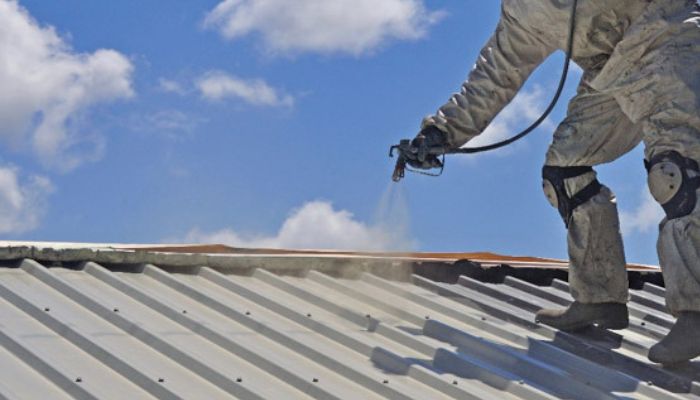
After completing the painting, a final inspection is necessary to ensure quality and completeness of faded colorbond roof. This part guides you through conducting a thorough inspection of the newly painted roof, identifying any areas that may require touch-ups or additional coats. We’ll provide tips on how to make final adjustments and ensure that your Colorbond roof looks its best.
Ensuring Longevity: Post-Painting Care and Maintenance
After successfully repainting your Colorbond roof, it’s crucial to focus on care and maintenance to ensure the longevity of the paint job. This section will cover essential maintenance tips to preserve the quality and appearance of your newly painted roof. Regular inspections, cleaning routines, and immediate attention to any minor damages or wear are vital. We’ll discuss how to gently clean your roof, the frequency of maintenance checks, and the importance of keeping gutters and downpipes clear to prevent water damage.
The Role of Weather and Environmental Factors
The Australian climate can be harsh, and understanding how it affects your Colorbond roof is essential for effective maintenance. This part will delve into the impact of environmental factors like the harsh Australian sun, coastal salt spray, and extreme weather conditions on Colorbond roofs. We’ll provide tips on how to mitigate these effects, including advice on rust treatment for coastal properties and strategies to maintain thermal efficiency.
When to Repaint: Recognizing the Signs of Wear
Knowing when to repaint your Colorbond roof is key to maintaining its protective and aesthetic qualities. This section will guide you in recognizing the signs that indicate it’s time for a new coat of paint. Look for indications such as significant fading, the emergence of surface rust, or the breakdown of the paint layer. We’ll also discuss how the age of the roof and the quality of the previous paint job can influence the repainting timeline.
Using Airless Spray Guns and Other Tools
For a uniform and efficient paint application, tools like airless spray guns are highly effective. This section will guide you on how to use these tools effectively, covering aspects such as airless spray gun patterns, pressure settings, and techniques for even coverage, especially on large or complex roof designs.
The Benefits of Professional Roof Inspections

While regular homeowner inspections are important, the value of professional and roofing material and inspections cannot be overstated. This part will discuss the benefits of having your Colorbond roof periodically inspected by a licensed roofing contractor or metal roofing specialist. Professional inspections can uncover issues that might be overlooked otherwise and provide expert advice on maintenance and potential roof repairs.
When to Consider a Professional Roof Restoration
Sometimes, a simple repaint might not be enough, especially for older or severely degraded roofs. This part will explore the scenarios where professional roof restoration might be necessary. We’ll cover what roof restoration involves, from repairing broken tiles and replacing corroded metal sheets to applying advanced membrane coatings, and how it differs from standard repainting.
Roof Restoration: Beyond Simple Repainting
In some cases, a Colorbond roof may require more than just repainting. Roof restoration is a comprehensive process that may include repairing broken tiles, replacing corroded metal sheets, and applying advanced membrane coatings. This section will explore when roof restoration is necessary and how it goes beyond simple repainting to fully rejuvenate and protect your colorbond roofing materials throughout.
Conclusion: Achieving Success in Repainting Colorbond Roofs
Repainting a Colorbond roof is a significant undertaking that can dramatically enhance the appearance and longevity of your home. By understanding the unique properties of Colorbond and other roofing materials, and following a meticulous process from preparation to final touch-ups, homeowners can achieve a professional and durable finish. The key to a successful repainting project lies in careful planning, selecting the right materials, and adhering to best practices throughout the painting process. With patience and attention to detail, repainting your Colorbond roof can not only boost your home’s curb appeal but also provide lasting protection against the elements.
Q&A Section for Repainting Colorbond Roofs
Q1: How often should Colorbond roofs be repainted?
A1: The frequency of repainting a Colorbond roof depends on factors like climate, roof condition, and the quality of the previous paint job. Generally, a Colorbond roof may need repainting every 10 to 15 years.
Q2: Can I repaint a Colorbond roof myself, or should I hire a professional?
A2: While it’s possible to repaint a Colorbond roof yourself, it requires specific skills and safety measures. For large or complex roofs, or if you’re not confident in your painting abilities, it’s advisable to hire a professional.
Q3: What type of paint should be used on a Colorbond roof?
A3: Use paint specifically formulated for Colorbond or metal roofs. These paints are designed to adhere to metal surfaces and withstand harsh weather conditions.
Q4: How do I prepare my Colorbond roof for repainting?
A4: Preparation involves cleaning the roof to remove dirt, grime, and any flaking paint, repairing damages, and applying a suitable primer. Proper preparation is crucial for the paint to adhere correctly and last longer.
Q5: Is it necessary to apply a primer before painting a Colorbond roof?
A5: Yes, applying a primer is essential as it helps the paint adhere better to bare metal and provides an extra layer of protection against rust and corrosion.
Q6: What weather conditions are ideal for repainting a Colorbond roof?
A6: Ideal conditions for painting colorbond roof are dry, mild temperatures without extreme heat or cold, and low humidity. Avoid painting on rainy or very windy days.
Q7: How long does it take for the paint on a Colorbond roof to dry?
A7: Drying times can vary based on weather conditions and the type of paint used. Generally, it takes about 2-4 hours for the paint to be touch-dry, but it can take up to 48 hours to fully cure.
Q8: What are the common mistakes to avoid when repainting a Colorbond roof?
A8: Common mistakes include not properly cleaning the roof, applying paint in unsuitable weather conditions, using the wrong type of paint, and inadequate surface preparation.
Q9: Can changing the color of my Colorbond roof affect its performance?
A9: Changing the color won’t affect the roof’s performance, but lighter colors may reflect more heat, potentially improving energy efficiency.
Q10: How can I ensure the best results when repainting my Colorbond roof?
A10: Ensure the best results by thoroughly preparing pressure cleaning the surface, using high-quality paint and tools, applying the paint evenly, and adhering to safety guidelines. Consider professional help for optimal outcomes.
